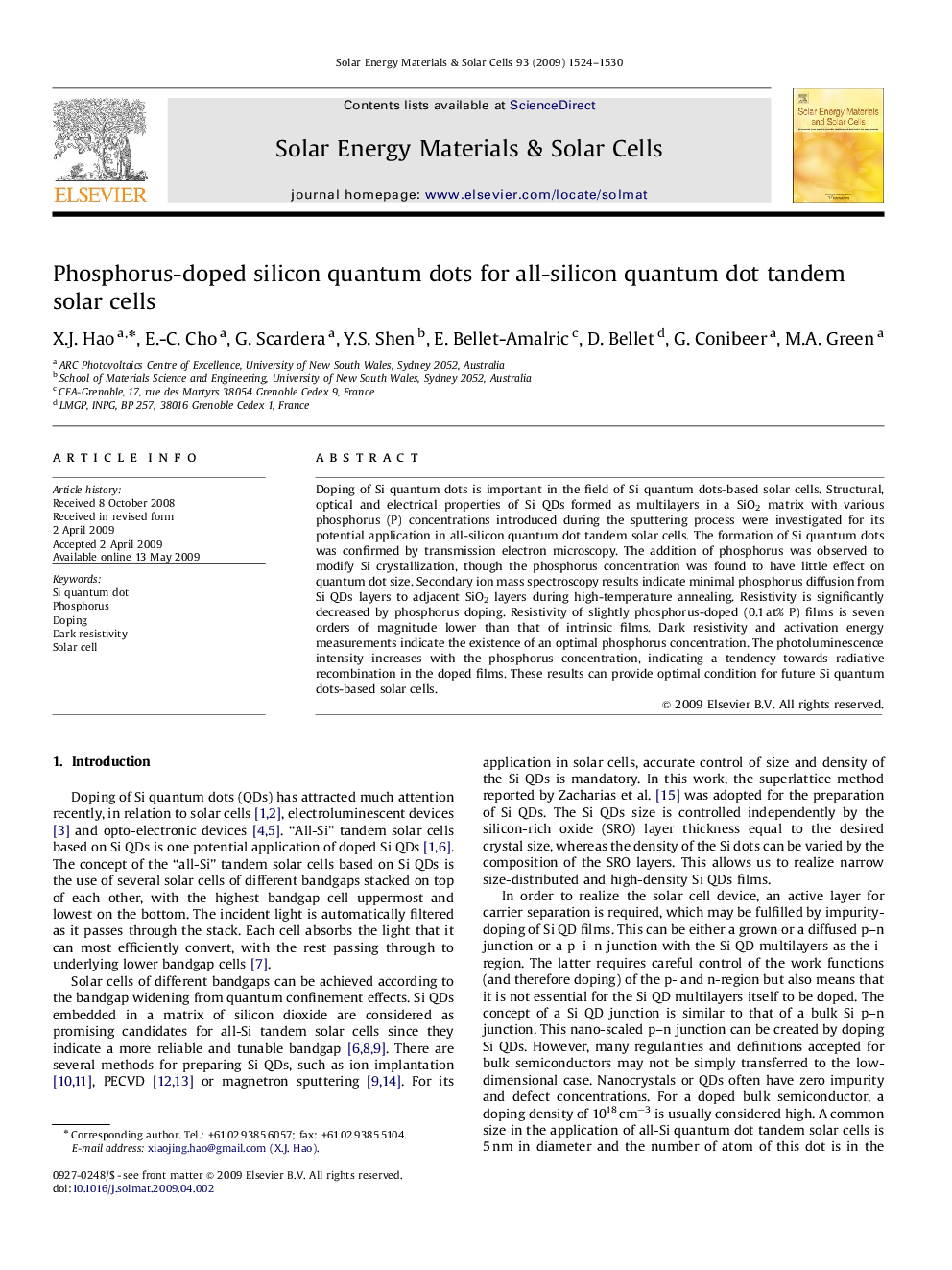| Article ID | Journal | Published Year | Pages | File Type |
|---|---|---|---|---|
| 80361 | Solar Energy Materials and Solar Cells | 2009 | 7 Pages |
Doping of Si quantum dots is important in the field of Si quantum dots-based solar cells. Structural, optical and electrical properties of Si QDs formed as multilayers in a SiO2 matrix with various phosphorus (P) concentrations introduced during the sputtering process were investigated for its potential application in all-silicon quantum dot tandem solar cells. The formation of Si quantum dots was confirmed by transmission electron microscopy. The addition of phosphorus was observed to modify Si crystallization, though the phosphorus concentration was found to have little effect on quantum dot size. Secondary ion mass spectroscopy results indicate minimal phosphorus diffusion from Si QDs layers to adjacent SiO2 layers during high-temperature annealing. Resistivity is significantly decreased by phosphorus doping. Resistivity of slightly phosphorus-doped (0.1 at% P) films is seven orders of magnitude lower than that of intrinsic films. Dark resistivity and activation energy measurements indicate the existence of an optimal phosphorus concentration. The photoluminescence intensity increases with the phosphorus concentration, indicating a tendency towards radiative recombination in the doped films. These results can provide optimal condition for future Si quantum dots-based solar cells.
